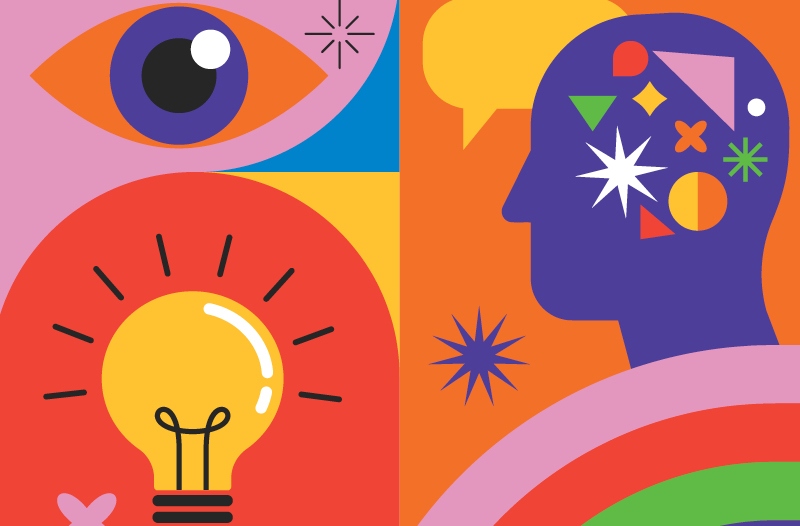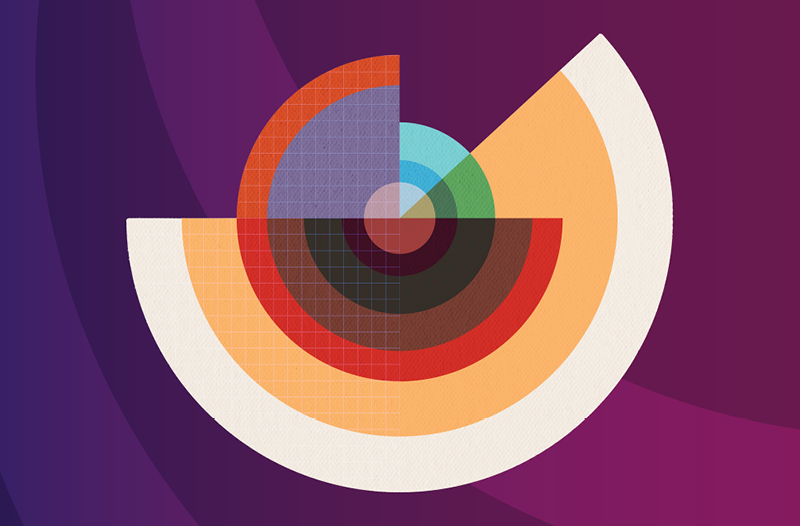
Quiet Your Mind

Kevin Davis, president of Kevin Davis Insurance Services in Los Angeles, a Worldwide Facilities company, is a devotee of mindfulness. He says it has enabled him to improve his business and, more importantly, his life. Editor in chief Sandy Laycox and founding editor Rick Pullen met with him over breakfast earlier this year for an enlightening conversation.—Editor
I started Kevin Davis Insurance Services in April 2000 as part of the Sullivan Group. I met Jerry Sullivan and Hank Haldeman and put together a D&O program for community associations. I went from zero policies to 30,000 in a 10-year period. It was incredibly successful. But around 2010, Liberty International came into the market and just cut our rates. For the first time, we’re facing competition. We’re no longer the hunter. Now, we’re the hunted.
Two things happened. We were losing money, so I had to lay off people. When you have to make these kinds of decisions, you second-guess yourself. And when you second-guess yourself, the decision gets harder and harder and harder.
And then, on top of that, I had two children about to go to very expensive colleges.
My wife and I, together, took classes because the stress at work and at home was affecting our relationship. I was disengaged, distracted and very unhappy. Everything was just as bad as it could be. I was stressed. I was stressing her out. So I said let’s try this thing together.
After six weeks, everything changed. Things began to finally make sense. That’s how important this stuff is. I was calmer. I was less reactive, and things started to get better for me.
The class is based off of Jon Kabat-Zinn, the guy who founded the Stress Reduction Clinic at the University of Massachusetts Medical School and made mindfulness mainstream. He was a professor there at a time when other doctors said they couldn’t help a lot of people there with severe anxiety and pain issues.
He created an eight-week mindfulness stress-reduction program. As a result, the patients’ pain was lessened, or they were better able to cope with their condition. Physical pain, emotional pain—it’s all the same thing. The program teaches you how to deal with all types of pain.
Number one is meditation. We are constantly reacting. Our brains operate this way. Our brain operates to do one thing: solve problems. That’s all our brain does. It’s our mechanism for us to get things done.
What your brain does is go into the past and says, “OK, I should have finished the project faster, earlier. I should have done this. I should have done that.” You worry about everything in the past. That creates depression. Or your brain explores the future, which creates anxiety. So once the project is done and you go back to your room, your brain doesn’t shut down; it just keeps going. It has to solve a problem. It just has to constantly solve a problem.
What mindfulness does—it doesn’t shut your brain off—it lowers it to the point where you’re seeing things. You’re aware. The perfect example: you’ve watched The Wizard of Oz, right? Everything is in black and white and then all of a sudden things are in color—rich and vibrant.
Mindfulness is awareness. It is the ability to be aware. The definition of mindfulness is being present. Just understanding and being present, which opens the mind to curiosity. The key is being willing to be with what is. And that’s the really important thing. Food tastes better. I take my time when I eat. I take my time when I’m listening. Everything is just incredible because of the amount of awareness you have.
There’s informal and formal mindfulness practice. The formal is meditation.
Sit in your chair, and just like if a string is pulled, you pull it straight up. So you sit up. Close your eyes. Now, breathe in and out. Every time you notice when you breathe in and breathe out, you’re being present. By breathing, the in and out becomes an anchor to the present moment because when we breathe, it’s neutral, meaning we have no opinion about the breath at all. It’s just there. You’ll notice your mind will start to wander. You’ll hear noises, but just pay attention to your breath as you breathe in and you exhale. And when you hear a noise, that means you’re present.
The difference is right now I’m taking in everything that’s going on and I’m not judging anything. There’s zero judgment, and that’s the key. People judge, blame and criticize. That’s what we do. Once you’re able to put those three things away, then all of a sudden, whatever you’re giving me I’m aware of. Whatever we’re talking about, I’m aware of it. And all of a sudden I can react to you based on the information, not my preconceived ideas.
You cannot do anything if you’re not focused and you’re not present. Nothing happens when our minds are wandering. And the perfect example is when we go shopping. Whenever you go food shopping, you’re mindful about what you’re buying. You come back with exactly what you want. If you’re not mindful, you come back with a whole bagful of stuff you didn’t want.
The first thing I had to do was learn to become aware. So now all of a sudden, because of the awareness, I’m mindful.
I held an introduction into mindfulness class in the office for 30 minutes on Mondays and Wednesdays at 9 a.m. for six weeks. And I told the staff it’s not mandatory but it could help limit stress.
We had two classes of about 15 people. Once I got them in there, I realized there were group dynamics issues I had to deal with. Employees [sitting] next to supervisors was one. I realized it’s going to be hard to get them to open up and ask questions because of who they sat next to. And I didn’t realize opening up was very difficult to do because I’m the boss.
What I had to do was open up myself and be vulnerable. I told them about my 88-year-old parents and my sister who is taking care of them. My sister is the youngest. She has five brothers. She’s carrying all the weight. I live in California. They live in New Jersey. So that causes some interesting sibling dynamics.
I’m telling my class that I got angry at my sister because she said I wasn’t helping out enough. What happened is you realize that, by being mindful, you’re not really angry at her. You’re feeling guilty because you want to do more, but you’re afraid. It’s the fear that’s coming into play. By being mindful, you deal with the fear and not the anger. That’s the difference.
If you’re mindful and you’re afraid, you realize that you’re fearful about four things: shame, guilt, embarrassment and humiliation. Those four things matter. Nothing else matters. And they keep coming up over and over again.
Yeah, but they’re different. I bought a new car, OK, and I’m the boss. If I felt guilty buying a new car, the guilt would come from buying a car I can’t afford. My wife said, “You’ve got to be kidding. You can’t afford a car.” I feel guilty about that. But shame is what I felt. Shame comes into play because I’m the boss and I was able to buy a new car when other employees couldn’t.
But mindfulness tells me that other people’s happiness and unhappiness depends on their actions, not your wishes for them. And that’s one of the things that we have to keep in mind all the time.
A mindfulness tool to use here is R-A-I-N. And that’s how you handle your negative emotions—like I was angry at my sister. “R” recognizes that emotion. So I’m angry right now. Then the “A” is accepting. Do you accept the anger? I couldn’t accept the anger. That’s when I found out it wasn’t anger. It was guilt, or shame. I recognize I want to help my parents more and I can’t. So now I was accepting the guilt part of it. “I” is investigate. This is, when we do a meditation, what I call body scanning. Instead of just breathing in and out, start with your face. Soften the face. Soften the jaws. Soften the mouth. All of a sudden the tension is often off your shoulders. It’s often in your chest. Then all of a sudden, at the end of the body scan you’re no longer upset. Whatever you felt beftore is kind of gone. So you are identifying it, you are investigating it.
Finally, “N” is not to identify with it. We end up identifying with that emotion. Am I an angry person? Or am I angry about the situation? I’m not an angry person. But what happens is we become the angry person and then all of a sudden we spend the rest of our day being angry. The key is to not identify with the emotion but separate it out.
Anger is our favorite emotion. There’s no better emotion out there than anger. It makes us feel good. It justifies our actions. It’s a survival mechanism to make us feel we’re right. Our minds are designed to keep us safe, nothing is more important for our survival than having the ability to use our minds to keep us safe. And whenever you feel agitated or stressed, all of a sudden we’re focused, and we can’t do anything else but deal with that situation. Anger comes out, and everything comes out. Now, we can’t do anything else.
You can’t measure it. This is an individual thing where managers say, “I can be a better manager if I take up mindfulness. I can approach problems better. I can solve problems better. I can be more creative.”
Each employee has to understand they are important to the operation to ensure, no matter who they are, they are connected. Connectivity is what we really want from our employees. When I first started it in the office, the idea was to make people more engaged in the workplace. So how do you get them engaged?
If you have more engaged employees, then you have people who are more enthusiastic on the phone and when you talk to that client on the phone, they are more receptive. You want receptivity, versus reactivity. You want employees who are fully engaged and who know their future is based on engagement.
Google mindfulness. Start there. It’s becoming a mainstream.
Also, consider a silent retreat. I’ve done one. You go away for a week and shut everything out. All of a sudden, no cell phones, computers or emails. Nothing like that. The first thing that happens? You will sleep. You can’t imagine how sleep-deprived we all are. You have no distractions, nothing. You come out with a whole different frame of mind for a little while. And then it kind of goes back to routine.
It was easy for me to accept mindfulness because deep down inside I was a guy that believed something was missing in my life and the qualities of mindfulness were already in my makeup. It was like life made sense to me for the first time. It went from a black and white world to everything in color.




